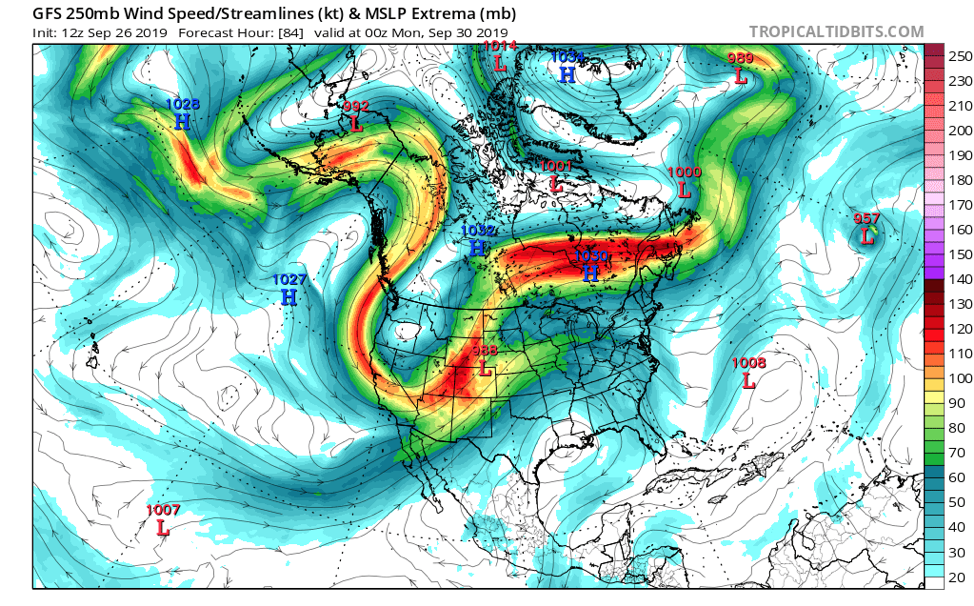Wacky Jet Stream Brings Both Cold and Heat to the US
How climate change destabilizes the jet stream and creates abnormal conditions

An early season, record-breaking storm brought up to 4 feet of snow to parts of Montana over the weekend, prompting the governor to declare a state of emergency. A bend in the jet stream, a signal of climate change, allowed for Arctic air to dip into Montana and created winter-like conditions. The same jet stream (highlighted in the image below) is causing “record-challenging” heat in the East.
Jennifer Francis, Senior Scientist at Woods Hole Research Center explains the image below:
“The southward dip in the jet stream just to Montana's west is formed as a rebound to the big northward swing into Northwest Canada that was almost certainly being boosted by the very warm ocean temperatures along the west coast of North America and north of Alaska. Those warm waters near Alaska are connected to the extreme sea-ice loss that occurred there this summer, which allowed a great deal of extra solar energy to be absorbed rather than reflected to space by ice.”
Climate models suggest that early autumn extreme snowfall events in the Northern Great Plains are less likely due to human-caused climate change. This average trend, however, does not rule out extreme weather outbreaks tied to Arctic warming and a destabilized jet stream. These outbreaks of Arctic air can break cold-temperature and snowfall records even as the average temperature increases. Here’s what we know for sure:
Climate change destabilizes the jet stream. This fast-moving, high-altitude river of wind determines weather patterns across much of North America, and is powered by the temperature differential between the frozen Arctic and warmer climate farther south. However, climate change is warming the Arctic much faster than areas farther south. That reduces the temperature difference between the two regions, cutting off the fuel required for the jet stream to maintain its tight, circular path As the Arctic rapidly warms, the jet stream slows and weakens, and favors a more meandering north-south path.
“When you’ve got one kind of extreme in one place, most likely you’re going to find extremes of other types also occurring at the same time because of these bends in the jet streams,” said Francis in a video explaining jet streams with Climate Signals in 2018.
The blizzard in Montana is due to this wavy jet stream pattern, which is also responsible for “record-challenging heat in the East” and “dramatically cooler conditions in the West.” Warmer-than-average temps could break records throughout the Midwest and East Coast this week.
Climate change increases the frequency of extreme storms. Warmer air holds more moisture and causes more intense rain and snow storms. NOAA scientists, examining 120 years of data, found that there were twice as manyextreme regional snowstorms in the US between 1961 and 2010 compared to 1900 to 1960.
